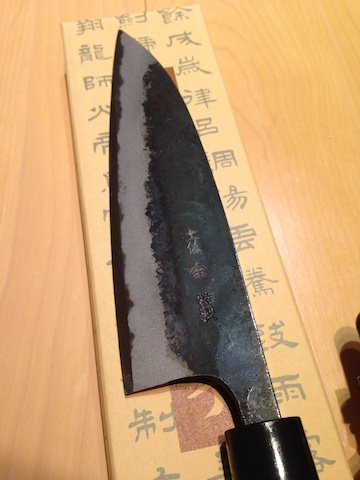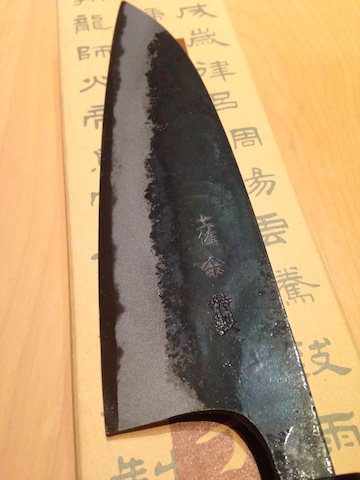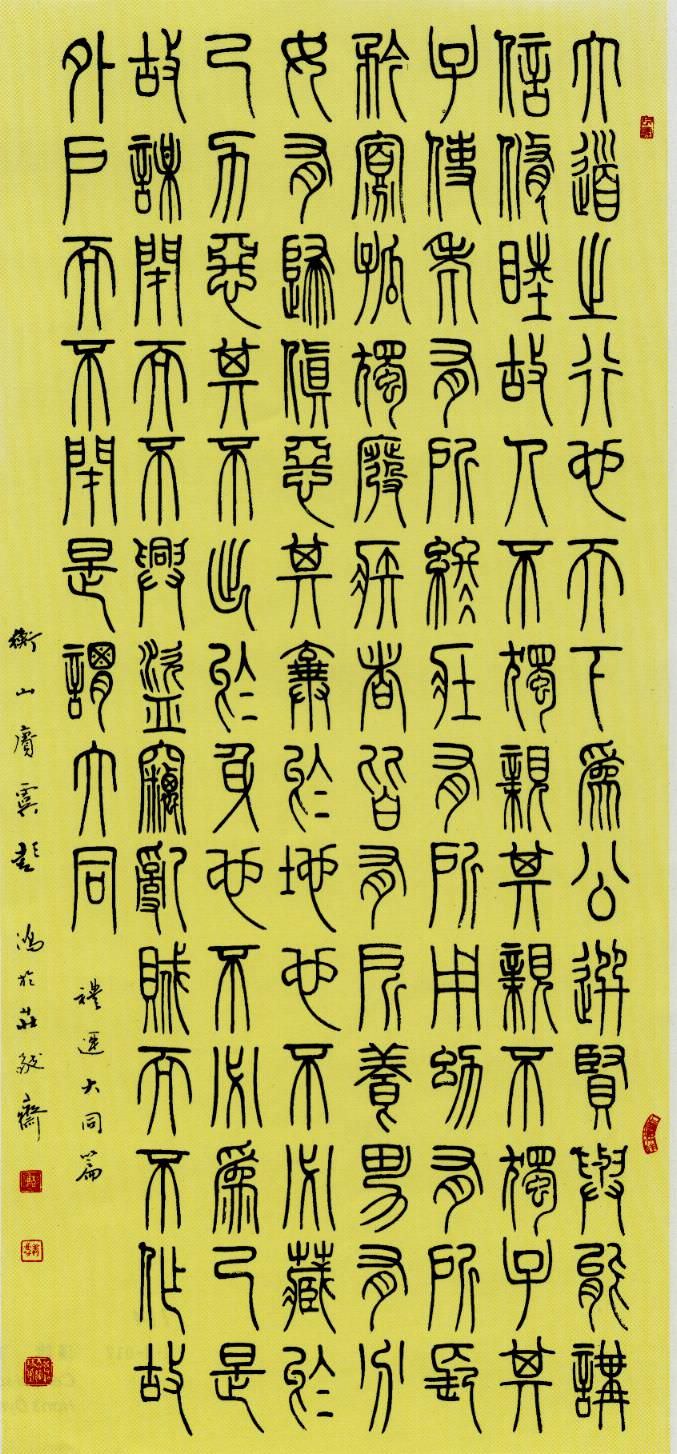Can anybody help me out with this one?
http://i.ebayimg.com/00/s/MTYwMFgxMTk5/z/FgQAAOSw4A5Y1a45/$_27.JPG
http://i.ebayimg.com/00/s/MTYwMFgxMTk5/z/FgQAAOSw4A5Y1a45/$_27.JPG




I take it that only a few members here know more than a few Japanese words - sushi, sashimi, tsunami and the inevitable knife stuff like nakiri, kasumi, sujihiki etc. In fact you probably know more knife words than other words in Japanese! Anyway, despite spending over 2 years in Japan I'm not really that different as I used English at home and work, and it was also more than 10 years ago. I know a bit of Nihon-go, but would like to learn a bit more - especially knife-related these days - and so was wondering if anyone could contribute to a thread on how to decipher a bit of what those etchings on our knives say? (Or stones...? and so on.) Maybe this kind of stuff hasn't been posted much before and could be useful.
:sumo:
First of all, I can contribute this: I'm not sure how many people are actually aware that Japanese traditionally uses 3 different scripts, of which kanji is just one. Sometimes people post things like, 'I can't read kanji.' However, I'm not completely sure if this means that they can read the 2 other main scripts, hiragana and katakana, or not. Probably not, I'd guess.
They're not that tough to tell apart, with a little practice, and they have different roles. Kanji is the most complex-looking one, Chinese characters that began to be used in Japan a couple thousand years ago, for example: 漢字 (kanji), 日本 (Japan), 東京 (Tokyo), 堺市 (Sakai), 重房 (Shigefusa). They're terribly complex and can mean different things, with many/most characters having more than 1 pronunciation, I believe. I only know a few of these - and for good reason as it's an absolute mess. Unfortunately, these are what we usually find on knives, they give the maker's name, and so I try to recognise them a bit.
Hiragana is the best-looking script, I think. It's less complex than kanji and is kind of loopy: ひらがな (hiragana), おさか (Osaka), はもの (hamono). It's generally used phonetically, which makes it way easier to learn, with each character usually representing one Japanese 'sound', such as ひ (hi) ら (ra) が (ga) な (na). Hiragana's used to represent hard kanji and for grammar, etc. You don't really see it on knives, though.
Then there's katakana, the simplest-looking script; straighter lines than hiragana. It's basically always phonetic and matches the Japanese sounds as hiragana usually does too: ナイフ (knife or 'na-i-fu'), キッチェン (kitchen or 'kii-chi-n'). This is the script I learned first as most words recently imported into the Japanese language are written in katakana. Very helpful when doing grocery shopping and reading labels, for example, even if the Japan-ised version of a word is a bit different. (Canned tuna, I remember, isn't called 'tuna' in Japanese but シーチキン or 'shiichikin' - 'sea chicken' - which I always thought was hilarious.)
:chicksign:
(Incidentally, romanji - our roman alphabet - is used quite a lot in Japan. Indo-Arabic numerals - 1,2,3... - are probably more common than their kanji equivalents.)
Here's some useful kanji as an example: 白 is white and 青 is blue, while 一 is 1 and 二 is 2, and so if you see 白 and 二 you can pretty much be sure a knife is shirogami #2. With katakana you might see スウェーデン which is pronounced as 'sue-de-n' and so you know you've got Swedish steel. Or you might see a kanji/katakana combo like 青紙スーパー 鋼 which contains the 'blue' kanji and also the katakana スーパー or 'suu-paa', and so you know you're got Aogami Super steel.
Hope this is interesting/useful. Please post if you have something to add.

It's 菊一文字 (Kikuichimonji) . There are several Kikuichimonji (e.g. Kikuichimonji-Norimune) brands in Japan.
It's definitely them! Really appreciate your help! It was very important to me that they were produced in Kyoto because I was born there.
Thanks again!
Enter your email address to join: